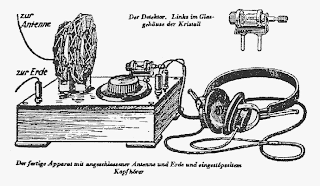One of the central forces that aided the growth, rise to prominence and widespread dissemination of radio (and radio culture) was the constant improvement of radio technology from its inception to the present.
In practically every area of the media, the force of technological change is responsible for large-scale improvement and increased accessibility by the public. What technology ultimately strives to do is to reduce the need for human effort in exchange for increased efficiency and flexibility, thus making any medium easier to utilize and spread amongst the populace. The Internet is perhaps the best example of this, as recent online innovations like iTunes, Hulu, and Netflix have revolutionized music, television, and home video respectively, each by bringing their intended service directly to the consumer’s home with increased speed, efficiency, and ease.
With respect to radio, technological innovations are what made the medium into the widely appreciated media giant it has become. This is due to the nature of radio as one of the earliest wireless mediums that could be broadcast directly into the home. When Gugliermo Marconi created the wireless telegraph, which was the first machine to use radio waves to broadcast messages wirelessly, it was restricted in the sense that it could only transmit messages through the medium of Morse code. Later, when Lee de Forest’s vacuum tube was applied to this technology, it enabled the transmission of sound, opening radio’s potential to broadcast music, talk shows, and ads to home receivers. With such technology in place, all it took was the ideas of men like David Sarnoff, who predicted radio’s status as a household utility, to launch the long and evolving phenomenon that it has become.


